Selecting a Brisket
In part 1 of our Brisket Smoking Class with Pitmasters,Tim McLaughlin and Damian Avila, we dive right into the topic of “Selecting a Good Brisket.”
Background
I've read Aaron Franklin's Meat-Smoking Manifesto, watched countless videos on brisket selection and talked to my brother-in-law who is a 5th generation cattle producer, Ph.D. in Animal Science and a worldwide expert ruminant nutrition.
So, I know selecting a good brisket is not as easy as just choosing a grade?
Tim: It's not easy. One needs to factor in other variables like how large the brisket is, how long it has aged, how you trim it, with what and how you season it, how long you let the seasoning sink in…and, of course, how you cook it.
Damian and I have tested hundreds of different briskets, cooked many, many thousands and offer guidance in this video from our brisket smoking class...
BBQ Student: So you use Choice briskets?
Tim: Yeah...we use Choice briskets. We don't use Select because it does not have enough fat…and we don't use Prime because it has too much fat.
BBQ Student: Really? I thought Prime was better than Choice? Isn’t a Prime steak better than a Choice steak?
Tim: We have tested Prime vs. Choice and we genuinely feel that the Choice briskets we source taste better. Damian and I both find Prime grade briskets to be too fatty and since they cost more and yield less usable meat than a Choice brisket, the only real benefit to using them - in our opinion - is that they are easier to cook. So, it makes sense that backyard BBQers with small grills may find smoking a prime brisket easier.
BBQ Student: OK, but I assume that not all Choice briskets are equal?
Tim: No. They vary. It may help you to understand the beef grading process a little more. While USDA inspectors use a process to assess “yield grades,” they mainly look at the ribeye and about 3% of cattle get graded as Prime. The next roughly 50% gets graded as Choice…so there is a lot of variation in that 50% and there are some things you can look for to try to get the best brisket possible.
BBQ Student: I understand bigger is better. You start with a very large brisket?
Tim: Yes. We experimented extensively with smaller briskets as it would be a lot easier on our backs. Unfortunately, smaller briskets just don’t have enough fat in them...and on them...to achieve the taste we want. So, staying true to the roots of Central Texas style brisket, we start with a whole brisket or “packer” with a weight between 16 and 17 pounds.
Me: How else can one determine how good a brisket is?
Tim: Start by looking at the exposed side of the brisket where you can see the marbling and get a better idea for how much intermuscular fat is in the brisket. We source our briskets from specific slaughterhouses, have very tight specs, and inspect every brisket that we receive to ensure that we get the ones with just the right amount of fat. So, we have an advantage over smaller restaurants and the backyard BBQer. However, there are still things one can look for to try to source the best brisket.
Me: Like what?
Tim: First off, you want to make sure the brisket has some flexibility to it. You should be able to fold the brisket over as this will provide evidence that it is tender and properly aged. Of course, vacuum packed briskets don’t fold easily in the packaging. And, since not a lot of butchers are going to let you go back in their shop and let you shake their meat, you are probably going to need to establish a relationship with one you trust if you want to get the best briskets.
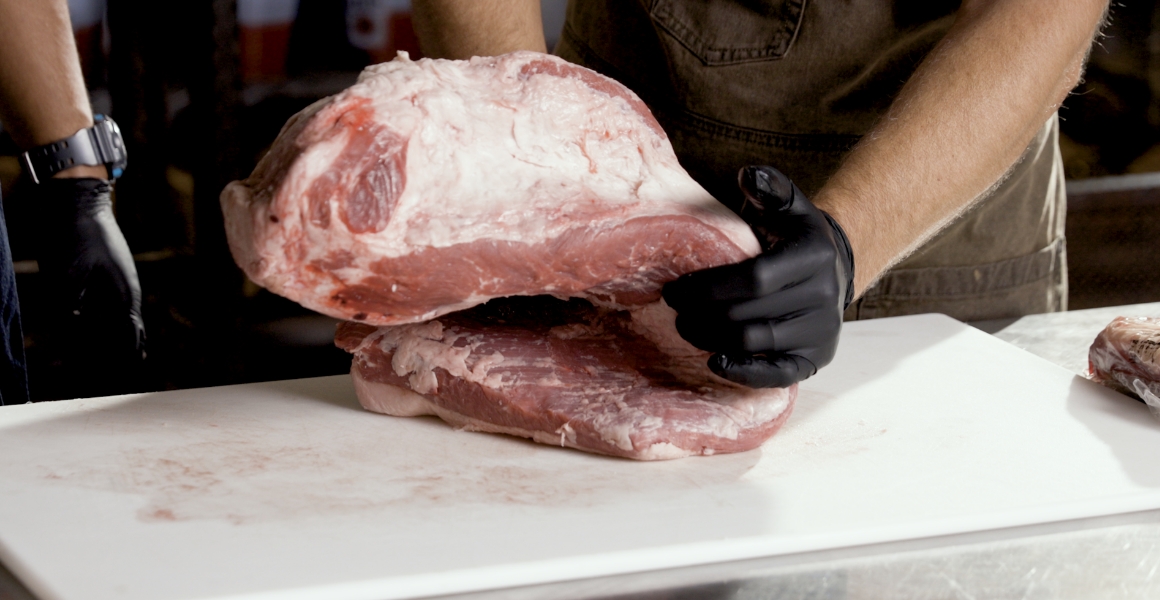
Me: OK, what else?
Tim: The second factor you want to consider is the color of the brisket and the color of the fat. You want all the meat color to be about the same…a nice shade of reddish pink. If it's too dark, that typically means it was slaughtered improperly. Too much blood rushed to that muscle…and it’s going to be a really tough piece of meat. Reddish pink is ideal.
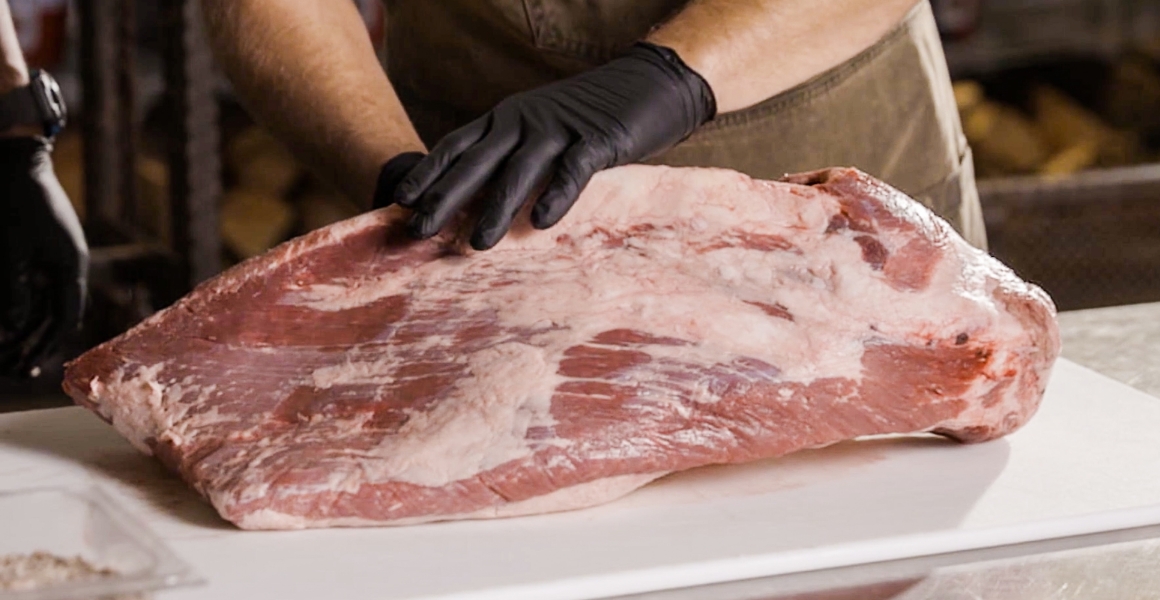
When you flip it over on the other side to look at the fat…you want this to be white in color - a nice, clean white. If it's opaque or yellow, that probably means the cow had more grass in its diet and grass-fed cows don't make for good barbecue. We want our brisket to come from a grain fed cow with white fat and a nice white fat cap.
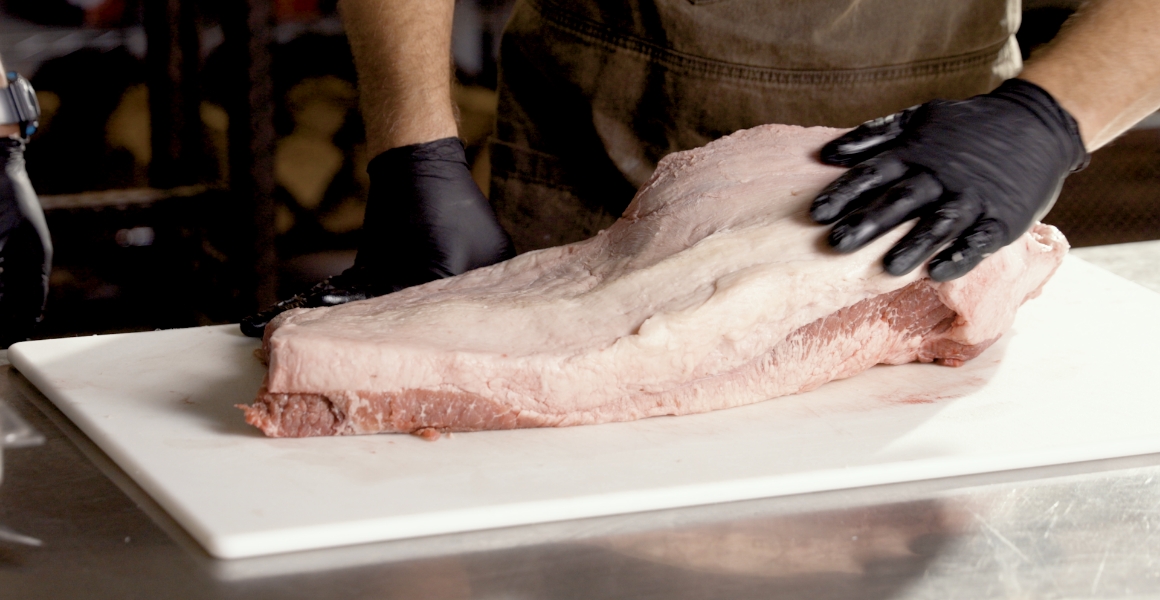
Damian: I’ve also seen some briskets in stores near my house that have brown spots on the edges. Brown Spots indicates that the meat has been previously frozen. So, if you go to the store and see those brown spots or the brisket is “on special,” that’s probably not going to be the best brisket to choose.
Me: You also mentioned wet aging, is wet aging a brisket important?
Tim: Most raw briskets are wet aged. Blood is pumped into the packages and the enzymes in that blood help break down the meat to make it more flavorful and tender enough that you can eat it. Don’t age it long enough and it is going to be too tough. Age it too long and it starts to go bad. Most briskets sold to restaurants and in grocery stores are aged right around 27 days – which is probably the shortest amount of time you’d like the brisket to age. At Crossbuck BBQ, we age our briskets for an extra 20 days or for a total of about 45-47 days.
So, if you can find a butcher shop willing to age a brisket for you this long, it is what we recommend. However, you can still smoke a fine brisket that is aged for less time than this.
Me: Thanks. Let me digest all of this.
Ship Crossbuck’s Central Texas Style BBQ Nationwide
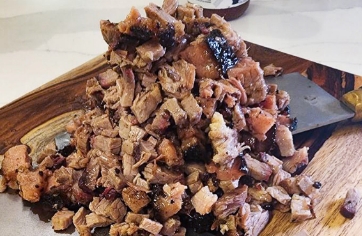
Chopped Brisket
Served in convenient oven-safe, vacuum-sealed, 1 lb. bags.
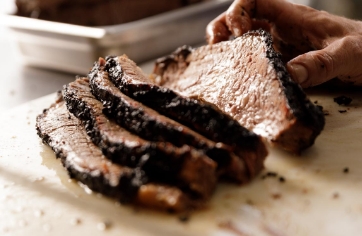
Sliced, Half or Whole Brisket
Served in convenient oven-safe, vacuum-sealed, bags.
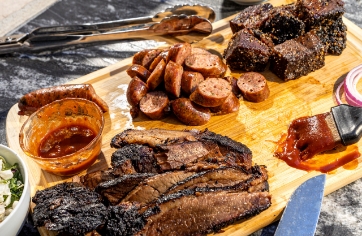
Samplers and Gift Packs
Central Texas Style Brisket + other Crossbuck favorites.
